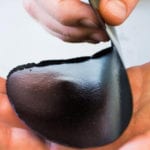 History
History  History
History  Weird Stuff
Weird Stuff 10 Superstitious Beliefs That Once Consumed Entire Cultures
 History
History 10 Bizarre Friendly Fire Incidents in Military History
 Technology
Technology 10 Modern Technologies That Accidentally Imitate Ancient Magic
 Mysteries
Mysteries 10 Mysteries of the Human Genome
 Weird Stuff
Weird Stuff 10 Things So Rare They’ve Only Been Found Once
 History
History 10 Legends Whose Last Moments Undid Their Glory
 Health
Health 10 Futuristic Ideas to Treat Common Medical Problems
 Weird Stuff
Weird Stuff Ten Surreal Attempts to Reverse Baldness
 Facts
Facts 10 U.S. Government Contingency Plans for the Unthinkable
 History
History 10 Odd Things Colonial Americans Kept at Home
 Weird Stuff
Weird Stuff 10 Superstitious Beliefs That Once Consumed Entire Cultures
 History
History 10 Bizarre Friendly Fire Incidents in Military History
Who's Behind Listverse?

Jamie Frater
Head Editor
Jamie founded Listverse due to an insatiable desire to share fascinating, obscure, and bizarre facts. He has been a guest speaker on numerous national radio and television stations and is a five time published author.
More About Us Technology
Technology 10 Modern Technologies That Accidentally Imitate Ancient Magic
 Mysteries
Mysteries 10 Mysteries of the Human Genome
 Weird Stuff
Weird Stuff 10 Things So Rare They’ve Only Been Found Once
 History
History 10 Legends Whose Last Moments Undid Their Glory
 Health
Health 10 Futuristic Ideas to Treat Common Medical Problems
 Weird Stuff
Weird Stuff Ten Surreal Attempts to Reverse Baldness
 Facts
Facts 10 U.S. Government Contingency Plans for the Unthinkable
Top 10 Weapons That Sounded Better On Paper
Weapons development occasionally takes a turn to the wacky when designers reach a little too far in their endless search for new and more efficient ways to war. Nonlethal weapons can prove an even greater challenge if ambitious inventors let their imaginations run too wild. What sounds incredible on paper sometimes ends up creating oddities that militaries would sooner forget. Some weapons are just so crazy that they’re doomed to fail.
10 The Gay Bomb

The weapons lab at Brooks Air Force Base in Texas proposed creating a “love bomb” that would make enemy combatants more concerned with making love than fighting. It would prove especially effective if it caused “homosexual behavior” in America’s enemies, they said. This was in 1994.
The proposal recommended devoting $7.5 million to developing “strong aphrodisiacs” used to spark the (preferably homosexual) lovefest. The paper was discovered after a military spending watchdog group requested documents under the Freedom of Information Act. Naturally, people had questions about this “gay bomb.”[1]
An Air Force spokesperson said that they are constantly considering funding proposals, but the “gay bomb” proved dead on arrival. Even other parts of the proposal, like creating bombs that attract stinging bugs to an enemy’s location or blasting the enemy with a strong stench, were likewise rejected by the Defense Department.
A spokesperson for the department said that he was not personally aware of the specific proposal, but it was one of the most ridiculous things he’d ever heard. At least someone in the government has some sense.
9 The God’s Voice Weapon

For years, there have been rumors about the military using a so-called “God’s voice weapon” to beam voices into people’s heads. Yet despite reports of soldiers witnessing it or even hearing it themselves, the weapon is still considered an urban myth among the military and written off as nonsense.
The technology, however, does exist in gun form.
Pioneered by Allan H. Frey, the microwave auditory effect (aka the Frey effect) is well-documented. When microwaves are beamed into someone’s head in short pulses, they create a thermoelastic wave of acoustic pressure that activates the body’s auditory receptors, as happens with normal hearing. The US government poured funding into the bioeffects of microwave radiation for two decades.
But while a gun that beams sound into a person’s head via microwaves was created, the God’s voice weapon is more likely to fry a person’s brain than make him believe that he is receiving messages from his deity. He might hear a “divine” message, but that much radiation poured into a person’s head would cause brain damage, baking his neurons before they were able to do much of anything.
Still, scientists have not given up on finding viable applications for the gun. In particular, advertising seems to be an area of focus. Whispered subliminal messages can be transmitted to customers as they walk the grocery store aisles—presumably without frying their brains.[2]
8 Project Babylon
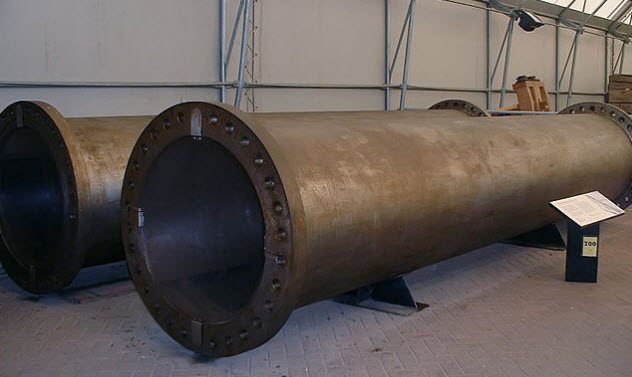
Gerald Bull was one of the world’s foremost experts on artillery, but his true passion was the creation of “Big Babylon,” a supergun that could potentially fire satellites into orbit. His smaller works were used by various governments, both for military purposes and for testing supersonic flight.
The start of the Vietnam War, however, cut Bull’s funding and forced him to look elsewhere for sponsors. Around this time, his colleagues started to suspect Bull’s search for cash had pushed him toward the dark side of military hardware. Not long after, he was arrested for international arms dealing.
His search for that ever-elusive patron eventually led him to Saddam Hussein, who was willing to fund Bull’s “Project Babylon” if he would also work on other artillery projects for the Iraqi regime. Bull readily agreed.
He reasoned that his Big Babylon would be an easy, unmovable target for air strikes if Saddam ever decided to weaponize it. But it was clear that Saddam intended to use the supergun as a weapon from the start—one that could fire on satellites in orbit.
Foreign powers knew this but were less concerned about the supergun than the artillery improvements that Bull was making on the regime’s weapons. Not long after his prototype gun was tested, he was shot dead in front of his apartment. Project Babylon fell apart.[3]
7 The Baynes Bat
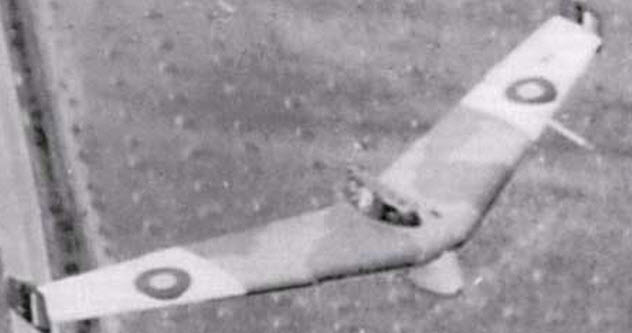
During the World Wars, militaries dreamed of airborne tanks they could pilot to the battlefield at a moment’s notice. Out of the many prototypes that tried to make tanks fly, none was worse than the Baynes Bat.
Unlike other models that essentially welded a pair of wings to a tank, the tank proposed by British designer L.E. Baynes was outfitted with enormous detachable wings, turning it into a temporary glider. A squadron of such weapons could sail directly to wherever they were needed. Then the wings would detach and be hauled away for reuse.
A prototype was created, a glider nicknamed named “Bat” because of its tailless shape. The earliest test flights indicated good performance, and the dream of flying a tank into battle seemed to be inching closer to reality.
That dream was quickly shot down by Captain Eric Brown, an experienced test pilot who took strong issue with the results of the first tests, which he considered bunk. When he got the Bat in the air, it had extremely poor harmony of control.
While not bad enough that he couldn’t successfully land the beast, the handling was so poor that he called the thought of attaching a tank to it “mind-boggling.” The Baynes Bat was grounded forever.[4]
6 The Gyrojet Rocket Gun

The Gyrojet was designed to be a lightweight, recoilless pistol that shot tiny “rockets” instead of bullets. The rockets looked very much like bullets, though, except for four exhaust ports on the rear of their brass casings. The projectiles held solid rocket fuel inside, and the exhaust expelled out the ports would set the rocket spinning to keep it flying in a straight line. Hence, the name, “Gyrojet.”
Despite how rad a rocket pistol sounded to its 1960s audience, firing a projectile with rocket fuel meant that it took time to reach its maximum velocity, just like a normal rocket. The rocket guns were ineffective at ranges shorter than 3 meters (10 ft), making the weapons very poor pistols.
Although several hundred Gyrojets were produced and a few even found their way into combat, the invention understandably never got off the ground. Nowadays, Gyrojets are mere collectors’ items. The rarity of their ammunition makes the “rockets” even more valuable than the guns themselves.[5]
5 The Pain Ray

In its search for the ultimate nonlethal crowd control apparatus, the US government created a “pain ray” that shot millimeter waves at its victims to heat up the topmost layer of skin. The idea was to make crowds so uncomfortable with an “intolerable heating sensation [akin to] opening an oven door” that they would disperse to escape the heat.
The pain ray was shown to reporters, who volunteered to be shot with it from 500 meters (1,640 ft) away. Due to the distance and perhaps the rain affecting the device, the results were less painful and more . . . pleasant. Some journalists even cracked jokes, saying they wanted to be shot again. During actual military testing, however, one subject had to be airlifted to a hospital after suffering burns.
The pain ray was eventually deployed in Afghanistan. But it was very quickly recalled as it was a potential PR nightmare. The military feared how locals would react once they learned that soldiers were zapping them with ray guns. Eventually, the gun was deemed “not politically tenable.”[6]
4 The Sun Gun

During World War II, Germany was planning to build a giant space mirror to roast enemy cities alive like a colony of ants under a microscope. Although it sounded like something out of a science fiction novel, the Third Reich actually took the plan very seriously because it was proposed by Hermann Oberth, the rocket scientist then believed (according to the Life article mentioned below) to have invented the somewhat successful V-2 missile used for long-range bombardments.
In fact, Wernher von Braun was later credited with the development of the V-2. But he had helped Oberth with liquid-fueled rocket motor tests at the Technical University of Berlin and been influenced by Oberth’s earlier work.
Life magazine first broke the story that Germany had plans for an orbital sun gun but quickly dismissed the idea as wishful thinking. They claimed that a mirror like Oberth’s planned weapon would do little more than cause the temperature to rise a few degrees with no damage.
Apparently, they underestimated the scope of Oberth’s design. He remained dedicated to his sun gun long after the project was abandoned. He stated, presumably with an evil laugh, that while a 13,000-square-kilometer (5,000 mi2) mirror would only heat the Earth to equator-like temperatures, a 26,000-square-kilometer (10,000 mi2) mirror would irradiate the surface until it reached 200 degrees Celsius (392 °F).[7]
3 Suicide Motorboats
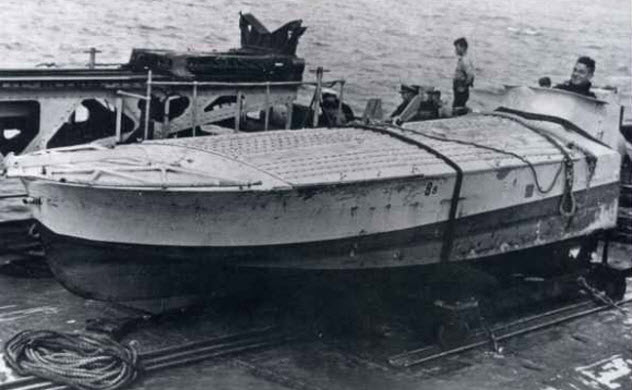
The suicidal kamikaze pilots of Japan were well-known for their attacks on naval ships, but the Italian navy also deployed kamikaze-like weapons. The 10th Light Flotilla used a variety of covert vehicles to bring down Allied ships, including miniature submarines. Their oddest and perhaps least effective weapons were MTMs (modified tourist motorboats) laden with explosives.
These boats were not intended to be suicidal. Instead, they were designed to have the cockpit detach when less than 91 meters (300 ft) from the point of detonation. The pilot would then wait in his life raft to be rescued after his payload struck the target. Such a distance did not ensure success, however, and pilots were often asked to sacrifice themselves for the mission.
But the scope of the MTMs was quite narrow, and the largest successful attack amounted to the destruction of two Allied merchant ships after several misses. Since the pilots were left to fend for themselves on a life raft after the blast, all the MTM soldiers were captured and unable to return to battle. Although the pilots of the explosive boats were considered “elite” by the Italian navy, they had almost no effect on the war.[8]
2 Project Habakkuk
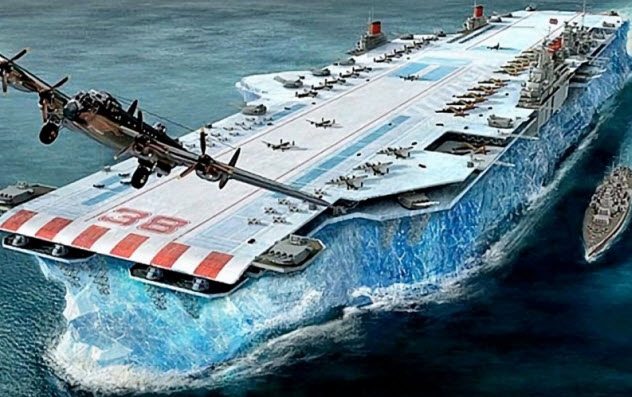
An aircraft carrier made of ice and wood pulp sounded crazy to everyone except Winston Churchill. When shown a piece of pykrete—a compound made of 15 percent wood pulp and 85 percent water which an eccentric inventor had said could be shaped into a 610-meter-long (2,000 ft) aircraft carrier impregnable to shells and torpedoes—he leaped aboard the program.
Project Habakkuk would make a 2.2-million-ton vessel containing a refrigeration system to keep it intact. It was cheaper than steel, and if damaged, it could be repaired by applying a pykrete solution to any hole.
Still, an aircraft carrier made of ice and wood pulp was a hard sell. It was made even harder by the project’s creator, an ex–business tycoon who was possibly insane and so arrogant that the US Army wanted nothing to do with him. Nevertheless, a smaller prototype was eventually made in Canada. To the surprise of many, it floated.
But British and US skeptics were attacking Project Habakkuk as a pipe dream. The project ran over budget, and the tide of the war had turned in the Allies’ favor. With things not so desperate as to need a mad inventor’s ice carrier anymore, the project was promptly abandoned.
One still has to wonder, though. Since a seaworthy vessel made of pykrete did actually float, could it have worked?[9]
1 USS Zumwalt
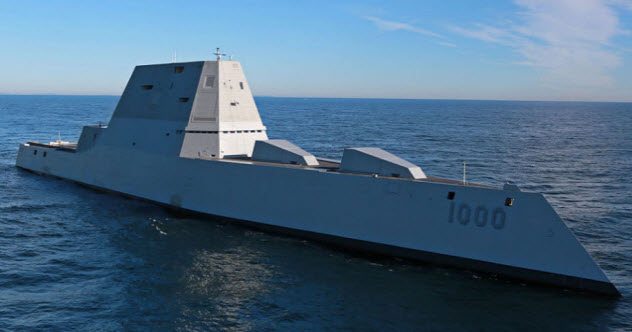
Zumwalt-class destroyers were designed to be the latest generation of US stealth warships. With odd angles designed to reflect signals, the ship’s radar signature looked like a 15-meter (50 ft) fishing boat instead of a military vessel.
The idea was that the destroyers could get close enough to enemy coastlines to fire extremely accurate, GPS-guided shells into the interior. The miracle shells were called Long Range Land Attack Projectiles, and they were what sunk the Zumwalts.
Shortly after commissioning the USS Zumwalt, the navy canceled the purchase of the rounds because they cost $800,000 apiece. Even for the US Navy, that much per shot was too expensive. The designers blamed the outrageous price tag on the navy’s decision to cut the order of ships from 32 to 3, which left the cost of rounds 12 times higher than planned.
Now the navy has a tough decision: What should it do about replacing the guns? Lockheed Martin has proposed a different guided artillery round for the ships. Railguns are also being considered if the technology works. An old-fashioned barrage of missiles is another viable option given the current state of naval combat.[10]
Whatever they choose, the $22.5 billion funneled into the advanced weapon system appears to have gone down the proverbial drain.
Mike lives on the East Coast, pays too much for beach parking, too little for sunscreen, and ends up broke and burned.
Read about more bizarre and expensive weapons that saw little or no action on 10 Ridiculously Expensive Weapons Canceled Or Never Used and 10 Wacky Experimental Nazi Weapons.







